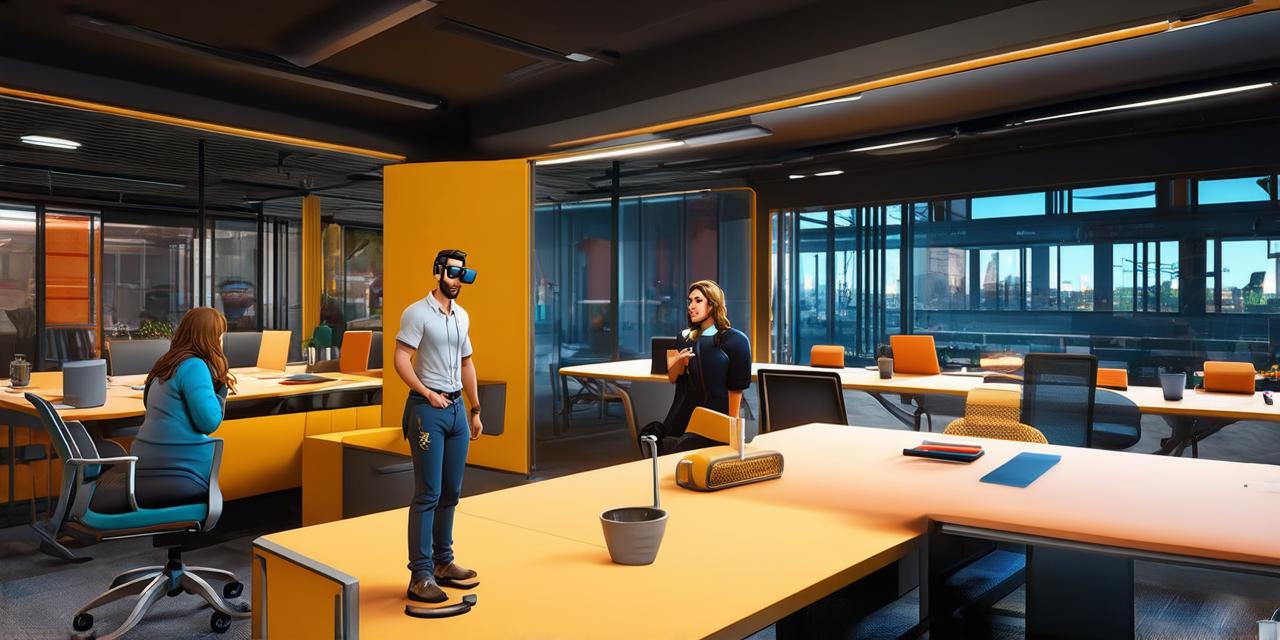Virtual reality (VR) is a rapidly growing technology that offers immersive experiences to users. It has gained popularity in various fields such as gaming, education, and healthcare. However, virtual reality has also emerged as an innovative tool for creating more inclusive work environments. This article explores how VR can contribute to promoting inclusion and diversity in the workplace.
Virtual Reality and Diversity: The Basics
Virtual reality technology provides a digital environment that can simulate real-world experiences. It uses headsets, sensors, and tracking systems to create an immersive experience for the user. With virtual reality, users can interact with objects and other people in a safe and controlled environment. This makes it an excellent tool for promoting diversity and inclusion in the workplace.
Virtual Reality in the Workplace: Use Cases and Examples
Virtual reality has been used in various industries to promote diversity and inclusion in the workplace. Here are some examples:
- 1. Virtual Reality Training for Diversity and Inclusion
- 2. Virtual Reality Employee Onboarding
- 3. Virtual Reality Employee Engagement
- 4. Virtual Reality for Accessibility and Inclusion
Virtual reality can be used to train employees on diversity and inclusion topics. It provides a safe and controlled environment for employees to learn about different cultures, perspectives, and experiences without the risk of judgment or discrimination. For example, an organization can create a virtual reality experience that simulates a diverse workplace, allowing employees to interact with colleagues from different backgrounds and learn how to work effectively in such an environment.
Virtual reality can also be used for employee onboarding. It provides new hires with a comprehensive introduction to the company culture, policies, and procedures. This helps them feel more comfortable and confident in their new role. For example, an organization can create a virtual reality experience that simulates the workplace environment, allowing new hires to familiarize themselves with the layout of the office and meet their colleagues before their first day on the job.
Virtual reality can be used to engage employees in their work and promote teamwork. It provides a fun and interactive way for employees to collaborate and communicate with each other. For example, an organization can create a virtual reality game that simulates a workplace scenario, allowing employees to work together to solve problems and complete tasks.
Virtual reality can also be used to promote accessibility and inclusion in the workplace. It provides individuals with disabilities an opportunity to experience the workplace in a safe and controlled environment. For example, a virtual reality experience can simulate a workplace environment that is accessible to individuals with visual or hearing impairments, allowing them to familiarize themselves with the layout of the office and learn how to work effectively in such an environment.
Virtual Reality and Inclusion: Research and Experiments
Numerous studies have shown the effectiveness of virtual reality in promoting inclusion and diversity in the workplace. Here are some examples:
- 1. A study conducted by the University of Maryland found that virtual reality training increased participants’ awareness of diversity and inclusion issues by 50%. The study also found that participants reported feeling more comfortable working with colleagues from different backgrounds after completing the virtual reality training.
- 2. Another study conducted by the University of California, Los Angeles found that virtual reality experiences increased employees’ empathy for individuals with disabilities by 34%. The study also found that employees reported a greater willingness to work with colleagues with disabilities after completing the virtual reality experience.
- 3. A study conducted by the Stanford University Virtual Reality Lab found that virtual reality simulations of workplace scenarios improved employee performance by 25%. The study also found that participants reported feeling more confident and comfortable in their roles after completing the virtual reality simulation.
Summary
Virtual reality technology has enormous potential to promote diversity and inclusion in the workplace. It provides a safe and controlled environment for employees to learn about different cultures, perspectives, and experiences without the risk of judgment or discrimination. Virtual reality can be used for employee onboarding, training, engagement, and accessibility. Research and experiments have shown the effectiveness of virtual reality in promoting inclusion and diversity in the workplace. As virtual reality technology continues to evolve, it will undoubtedly play an increasingly important role in creating more inclusive work environments.
